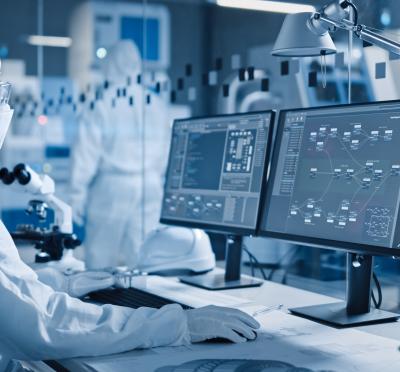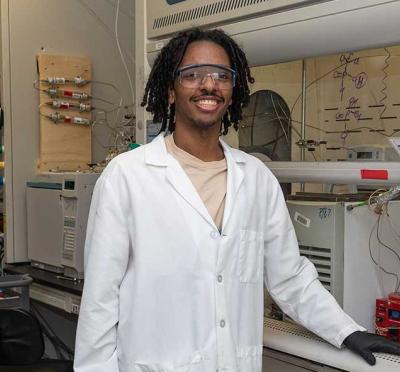A microscale system developed by Oregon State University researchers offers a modular, energy-efficient alternative to established desalination methods. A patent was issued for the technology in April 2020 (Patent No. US 10,618,826 B2).
“Our technology solves some of the major shortcomings of widely used desalination techniques, because it can recover more fresh water, it’s more energy efficient, and its operational costs will be lower,” said Goran Jovanovic, a professor of chemical engineering and principal inventor. “Potentially, it can be powered by renewable and distributed energy sources, like solar and wind, which makes it versatile and economically viable.”
At the core of the system is capacitive deionization technology, which uses charged electrodes to remove salt ions from saltwater. According to Jovanovic, the system routinely achieves a recovery rate of 75%, meaning it extracts 7.5 gallons of fresh water from every 10 gallons of saltwater. That’s significantly higher than for traditional desalination technologies, such as distillation and reverse osmosis. For example, the recovery rate of a typical large-scale reverse osmosis plant designed to convert seawater to potable water ranges from 50% to 60%, according to Jovanovic.
In a typical configuration of the device, two polymer plates face each other, separated by a gap of about 500 micrometers (half a millimeter). The plates, each about 250 micrometers thick, are coated with an even thinner electrode layer. The optimal linear dimensions of the plates have yet to be determined, but Jovanovic expects them to range from several centimeters to a meter.
As saltwater flows into the channel between the plates and the system is powered up, the charged electrodes attract and capture salt ions, and the purified water exits into a collection tank. When the electrodes become saturated with ions, the power is cut, the electrodes release the adsorbed ions, and a small flow of water flushes them out. The resulting stream of highly concentrated waste brine is shunted to a separate exit port, and the next desalination cycle starts up.
If necessary, water can be recycled through the system until its salt concentration reaches target thresholds. Drinking water characteristically contains several hundred parts per million of salt, while water used in high-tech clean rooms is completely deionized.
A crucial feature of the system is the extremely high surface area of the electrodes. As their surface area increases, so does the number of salt ions plucked from the water stream, which translates into faster and more efficient operation. Surface area enhancement is attained by using electrodes made of porous, carbon-based nanomaterials (graphene, for example) that have astonishingly high ratios of surface area to volume. Depending on the material it’s made of, an electrode that occupies a footprint of one square centimeter can comprise a surface area from 300 to 1,000 square centimeters.
Jovanovic envisions desalination modules assembled from millions of microscale cells working in parallel. Based on prototype testing results, he expects that a module the size of an office desk — a couple of cubic meters — will produce upward of 265 gallons every minute. A reverse osmosis plant working at the same rate would occupy 50 times the space, consume twice the energy, and require intensive maintenance, according to Jovanovich. “And because our technology is infinitely scalable, we could produce a droplet per minute or a billion droplets per minute. It all depends on how many cells are working at a time,” he said.
Though the system is well suited for far-flung communities worldwide where access to fresh water and electricity is unreliable, obtaining government funding for such initiatives can be daunting, according to Jovanovic. Instead, he’s pursuing other markets.
“The first application will probably not be to desalinate water for drinking, but in industries like semiconductors, pharmaceuticals, and gas and oil exploration, which need a lot of squeaky clean water for some of their processes,” he said. “Running and maintaining on-site reverse osmosis plants for internal water needs is an expensive technological challenge.”
The new technology is also more eco-friendly than older approaches to desalination, because it produces far less hypersalinated waste brine. When that brine is discharged, it kills every living thing it touches and creates environmental havoc. As he further develops his technology, Jovanovic anticipates using solar-thermal energy to squeeze out every drop of fresh water from the waste brine by evaporating and condensing the liquid and harvesting the solids that fall out. “Disposing of solid waste safely is much easier than dealing with the liquid,” said Jovanovic, adding that the solids often contain high levels of magnesium and rare earth metals — resources which could have substantial market value.
“Any new desalination technology has to be part of a comprehensive solution that considers the environment,” Jovanovic said. “From the energy source that powers the technology all the way to the recovery of all resources at the end, reducing environmental impact is the focal point of any future development.”




